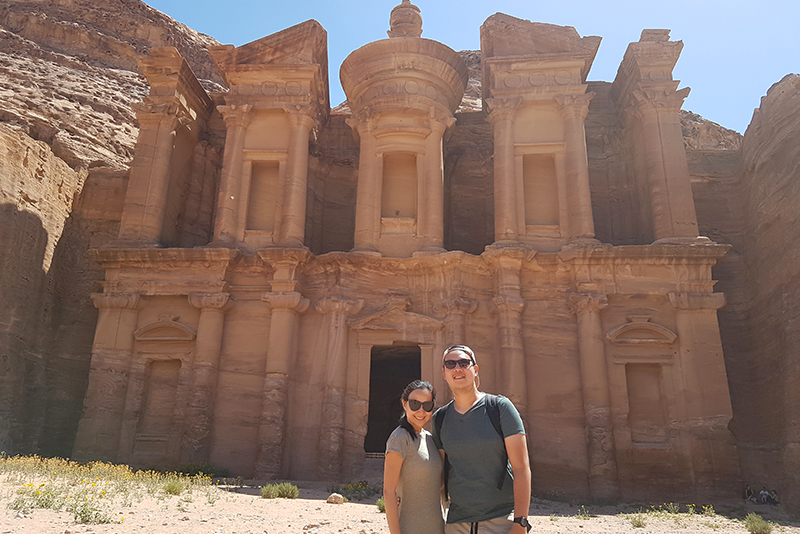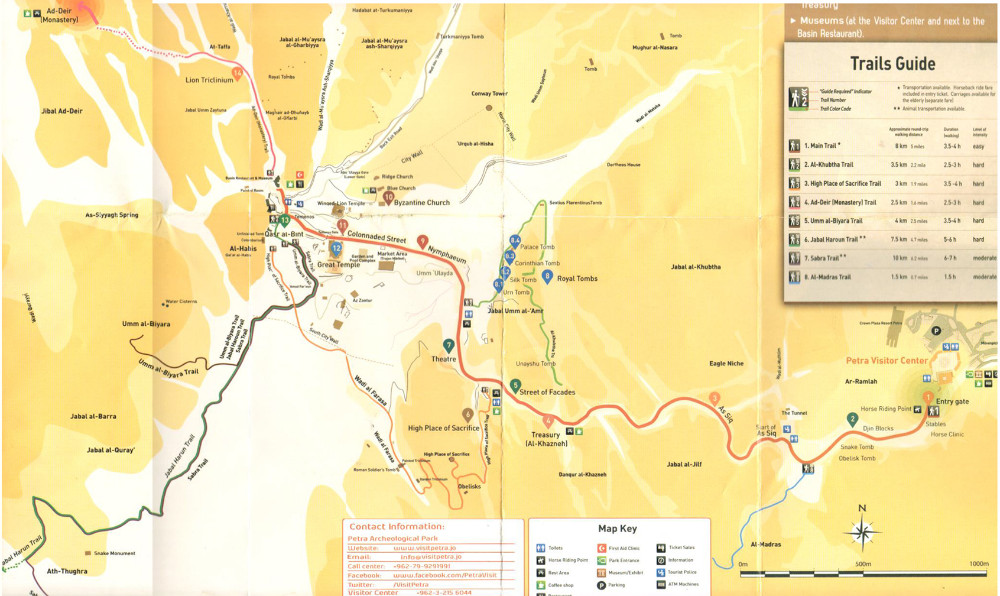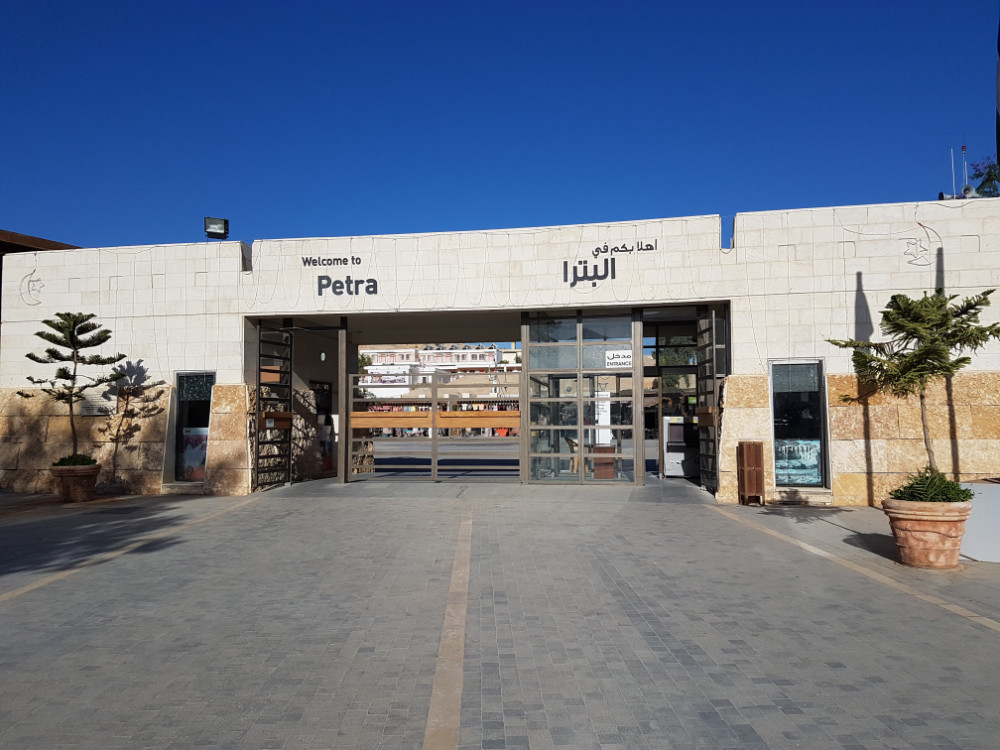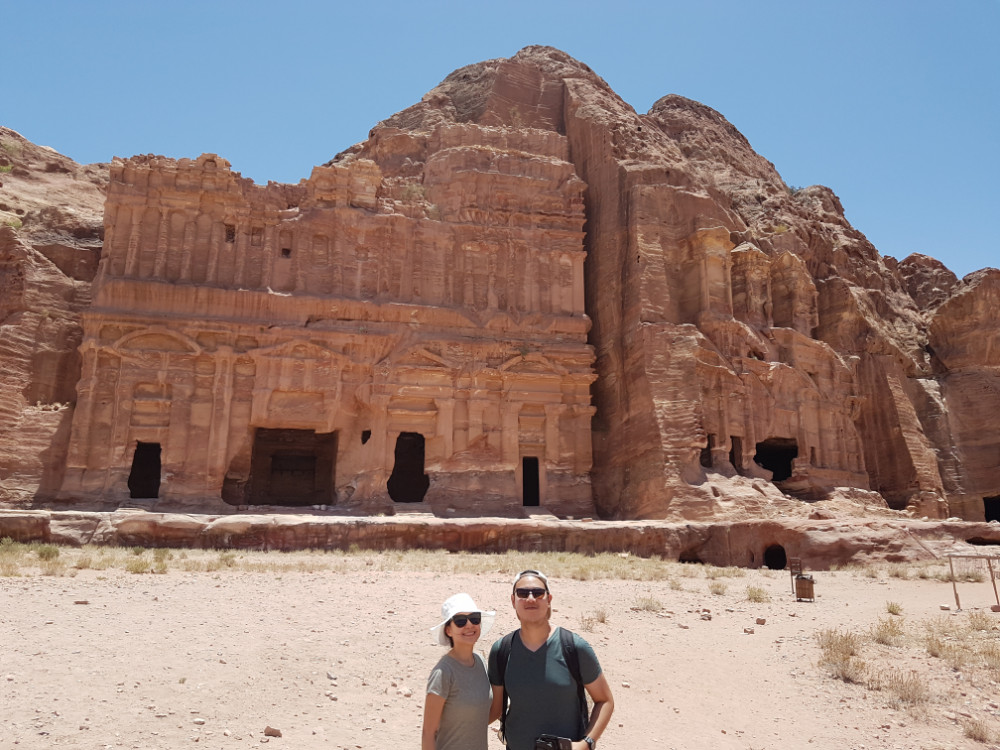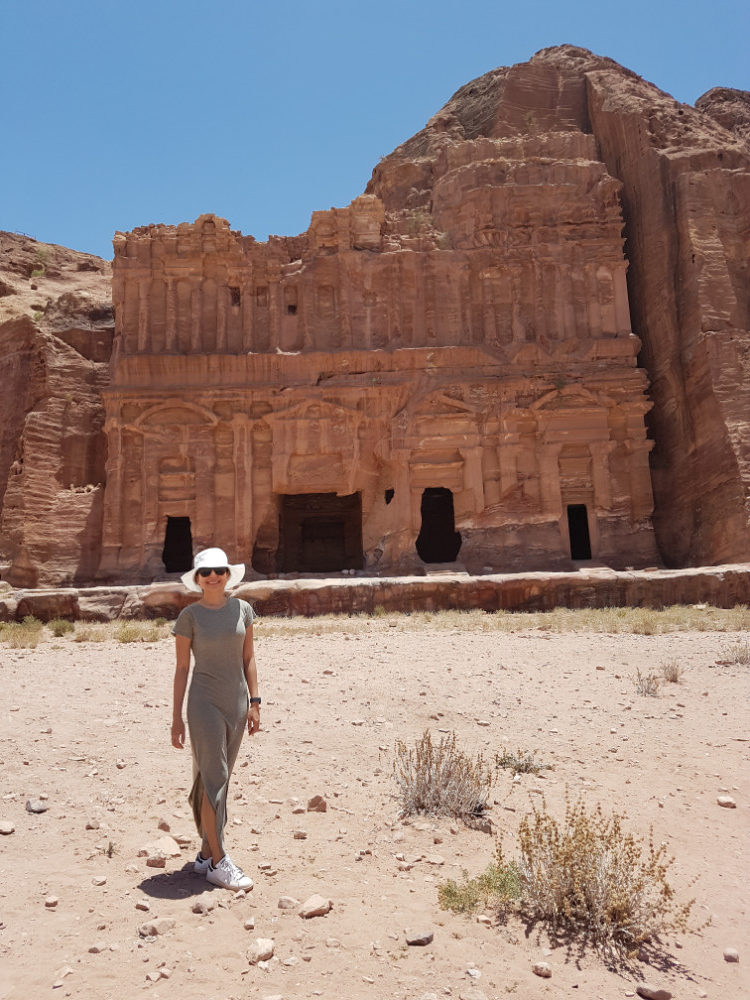We’ve put together a guide to a customized Ad-Deir (Monastery) Trail. This is for first-timers as it covers what we thought were the highlights inside the ancient city. We’ve included a map and as many photos as possible so you don’t miss any important structure on your way. The journey and tips are from our own experience while the facts are lifted from the map you pick up at the entrance. We wish we had this info before so hopefully you find it useful too!
Quick Facts:
- It is not known precisely when Petra was built, but the city began to prosper as the capital of the Nabatean Empire from the 1st century BC, which grew rich through trade.
- Petra was later annexed to the Roman Empire and continued to thrive until an earthquake destroyed much of the city in the 4th century AD.
- The earthquake combined with changes in trade routes led to the downfall and abandonment of the city.
- In 1812, a Swiss explorer named Johannes Burckhardt set out to rediscover Petra. He dressed up as an Arab and convinced his Bedouin guide to take him to the lost city.
- After this, Petra became increasingly known to the West and the rest of the world as a fascinating ancient city and began attracting visitors.
Opening Hours: 6:00am to 6:00pm
Tickets: Visit this link or get a Jordan Pass here.
Hours Needed: Allot at least 6 hours for this trail. Many people say you’ll need 2 to 3 days to see all of Petra. If you decide to do this, there are a lot of hotels that are a stone’s throw from this ancient city. Try to arrive early to avoid the crowd.
Must Bring: Water!
What to Wear: We walked on a combination of sandy and rocky surfaces hence, we recommend that you wear comfortable sneakers or rubber shoes. We’ve seen people in rubber slippers and trekking sandals, and this might be manageable depending on your hiking expertise. If you’re traveling in summer, protect your face with a cap or a hat and sunglasses, apply a very generous amount of sunscreen, and go for comfortable loose clothing ideally made of cotton.
Watch Out: We also advise that you cover your legs as a sign of respect for the Bedouins living and working there. You would find this also helpful, as when you climb up to the Monastery, there are high chances of encountering paths filled with flies feasting on dung of animals and going wild when you pass. These come from donkeys, horses and camels that are used to transport tourists as the route up can get exhausting. If you can, archaeological authorities recommend you walk as the hooves degrade the Nabatean-carved sandstone steps.
Our Journey: We completed this trail in 6.5 hours from 7:30am to 2:00pm. Follow the orange line from the (1) Entry Gate. You will be offered a “free horse ride” to the Siq or the Treasury. We said no to this because we’ve been warned you will most likely get pushed to pay at the end of the trip. Just keep following the line past (13) Qasr-al-Bint. After this, the hike to the Monastery starts. When you get here, there is an option to climb further for a bird’s eye view of the beautiful structure. On our way back, right after (13) Qasr-al-Bint, we turned left to walk up to the Winged-Lions Temple then the (10) Byzantine Church. There is no super obvious way from here to (8) The Royal Tombs, but head towards that direction anyway and you’ll be guided by zen stones and pathways. There will be stairs from here that lead you down to the (5) Streets of Façade. Follow the orange line again to exit.
Throughout, Bedouins will be offering rides to the Monastery or back to the Siq. Techniques can be persistent and creative. On most of the major stops, you will find three things:
- Cafes/Restaurants
- Toilets
- Bedouin stalls
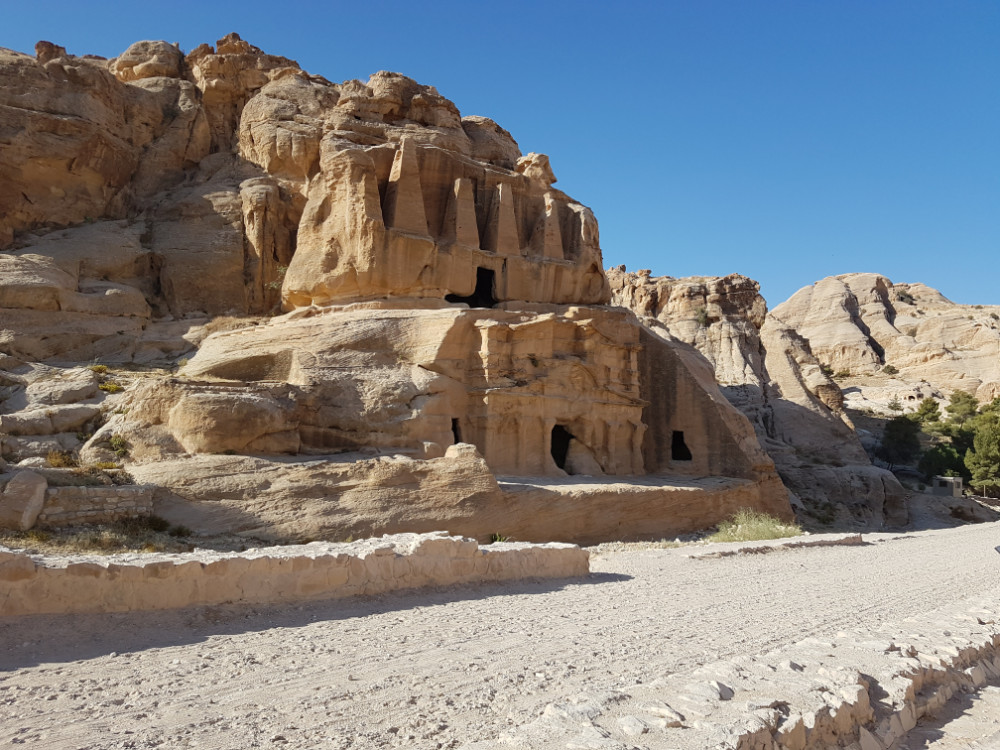 Bab Al Siq is Arabic for gateway to the Siq. There’s an Obelisk Tomb carved by the Nabateans in the 1st century AD and above it are four pyramids (“nafesh”); a niche with a statue in bas-relief that symbolizes the five people buried there; and the Triclinium, a banqueting hall.
Bab Al Siq is Arabic for gateway to the Siq. There’s an Obelisk Tomb carved by the Nabateans in the 1st century AD and above it are four pyramids (“nafesh”); a niche with a statue in bas-relief that symbolizes the five people buried there; and the Triclinium, a banqueting hall.
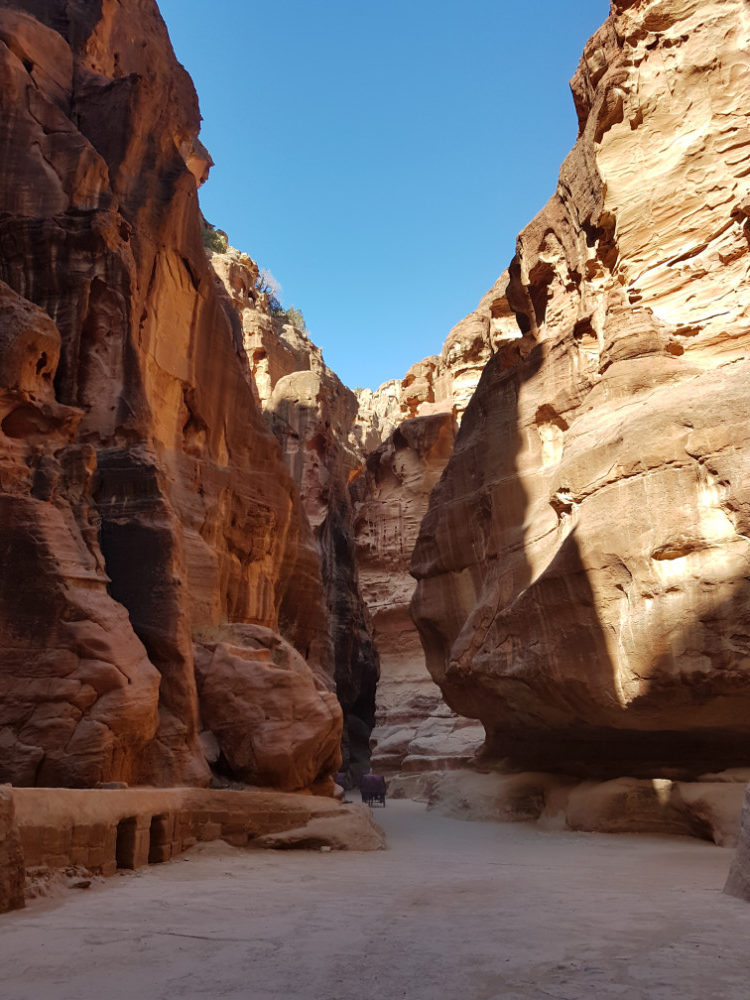
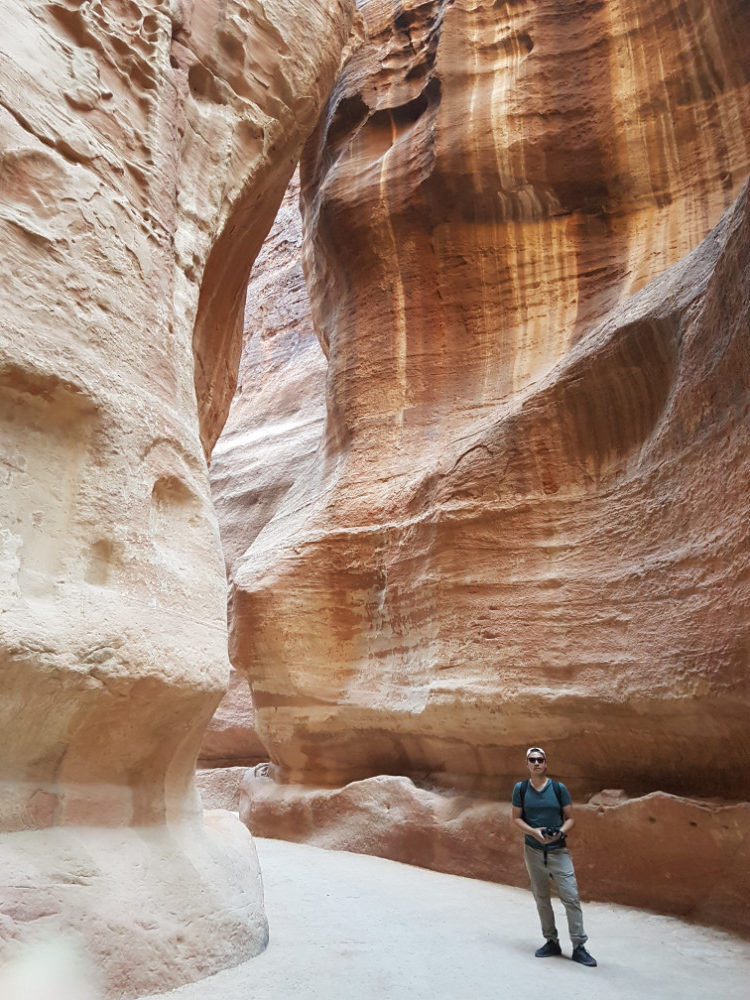
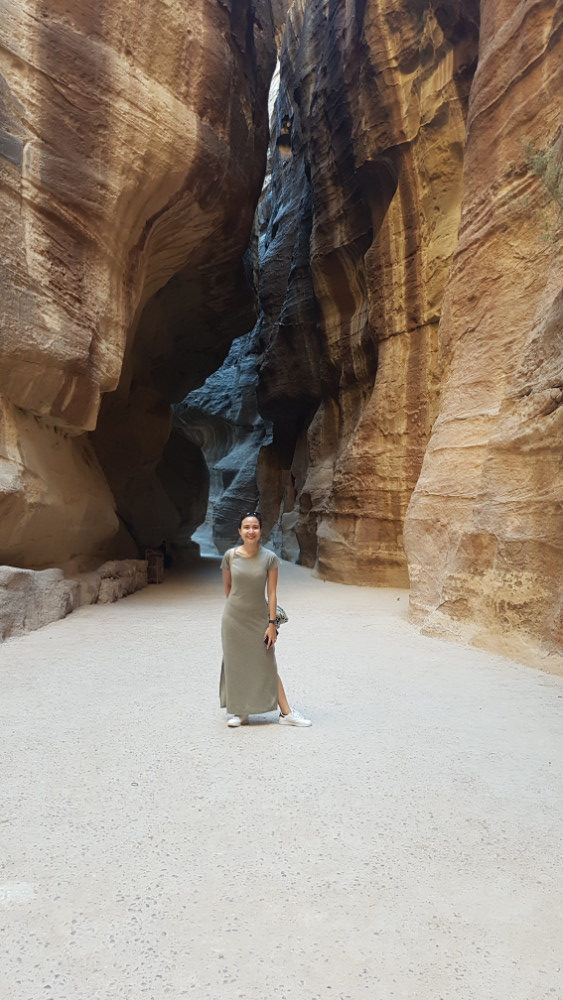
The Siq that stretches to 1.2km leads visitors into Petra. The entryway resulted from a natural splitting of the mountain.
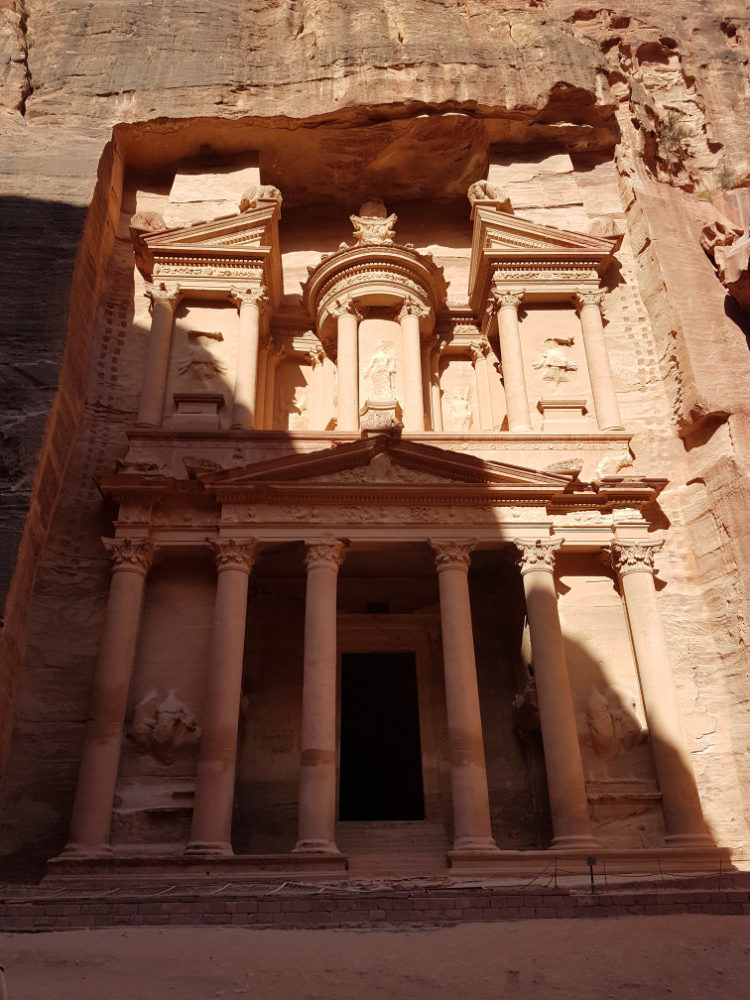
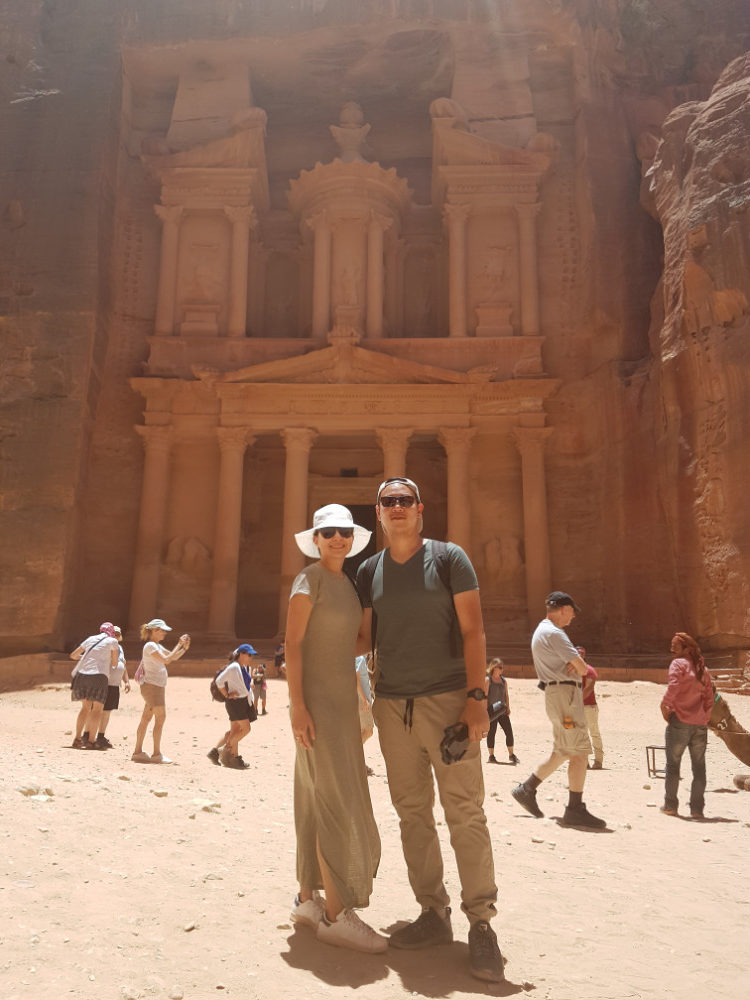
The Treasury standing almost 40meters high is believed to be constructed in the 1st Century BC. It is crowned by a funerary urn, which according to local legend conceals a pharaoh’s treasure.
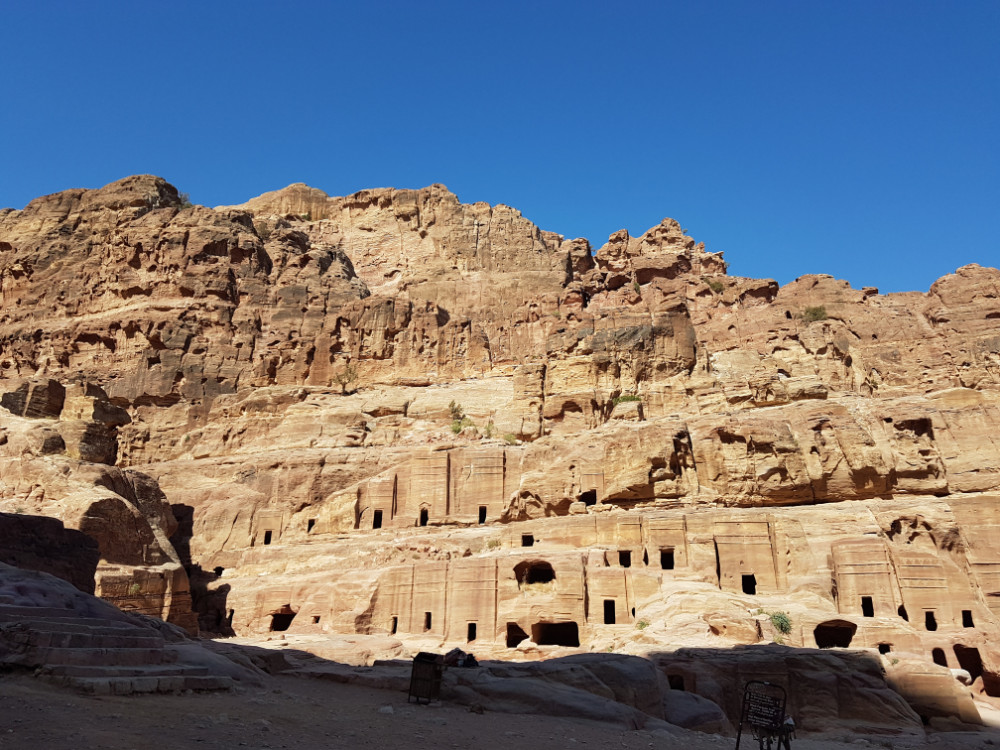
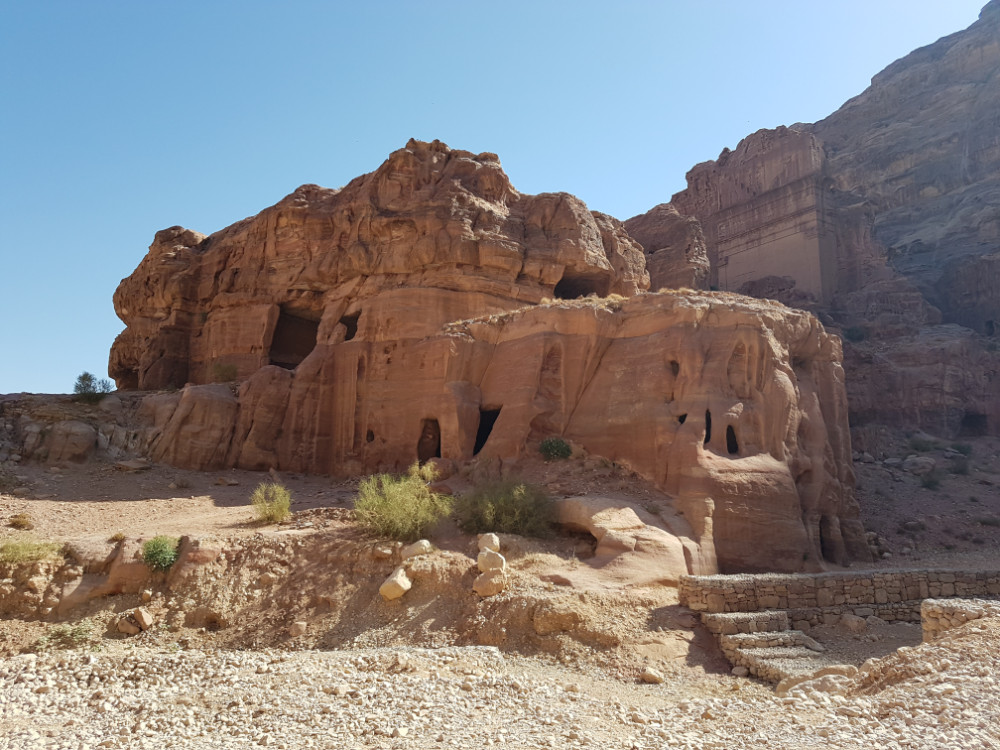
The Street of Facades is the name given to the row of monumental Nabatean tombs carved in the southern cliff face that lies past the Treasury and adjacent to the outer Siq.
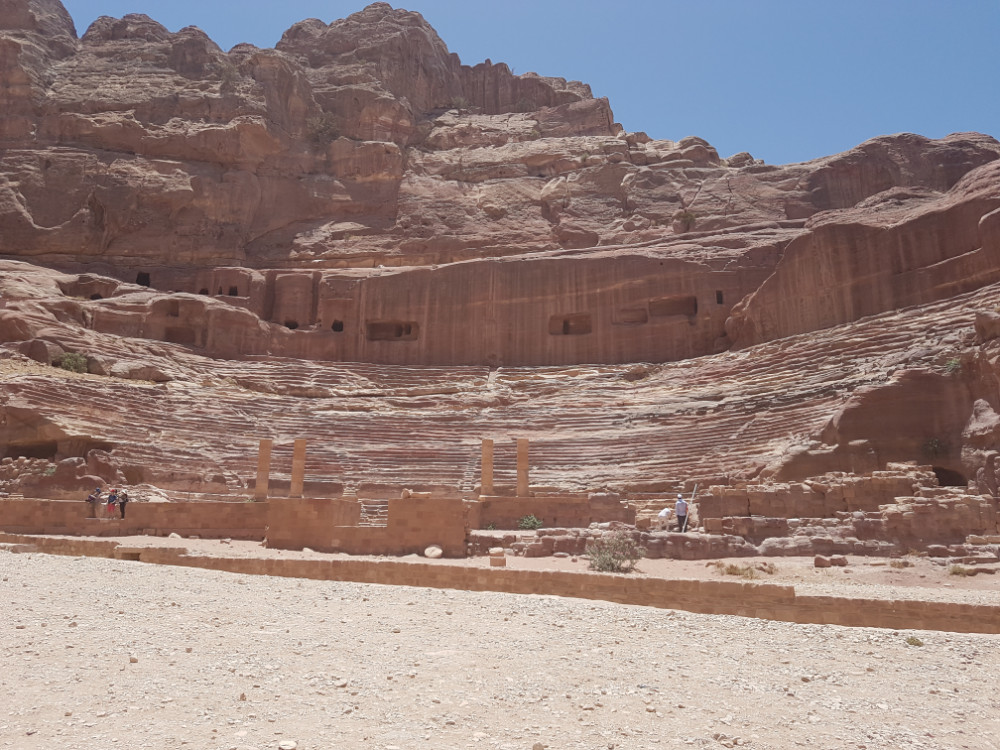
Carved into the side of the mountain at the foot of the High Place of Sacrifice, The Theatre consists of three rows of seats separated by passageways and can accommodate 4,000 spectators.
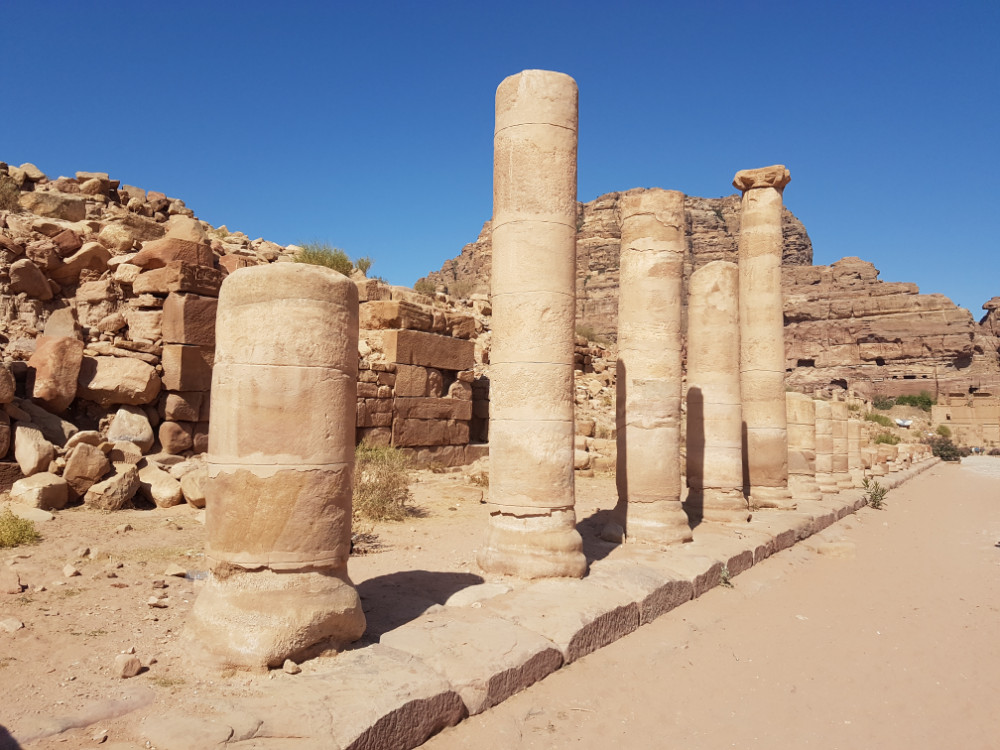
The Colonnaded Street represents an original Nabatean creation, later refurbished during the Roman occupation. This would have been one of the principal shopping streets at ancient Petra.
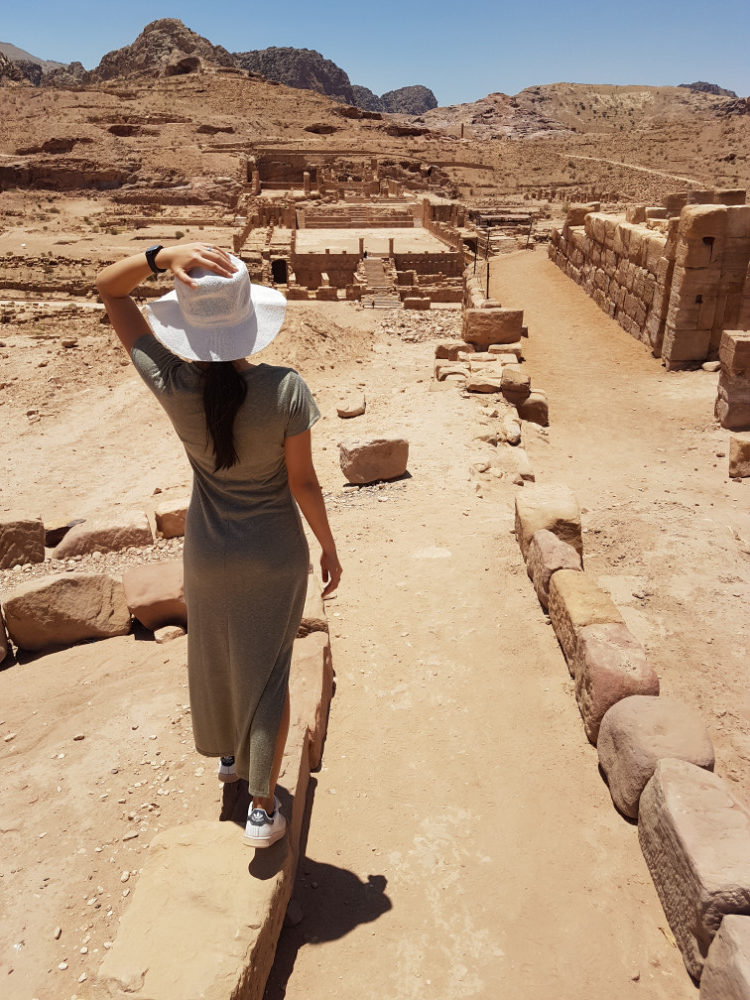
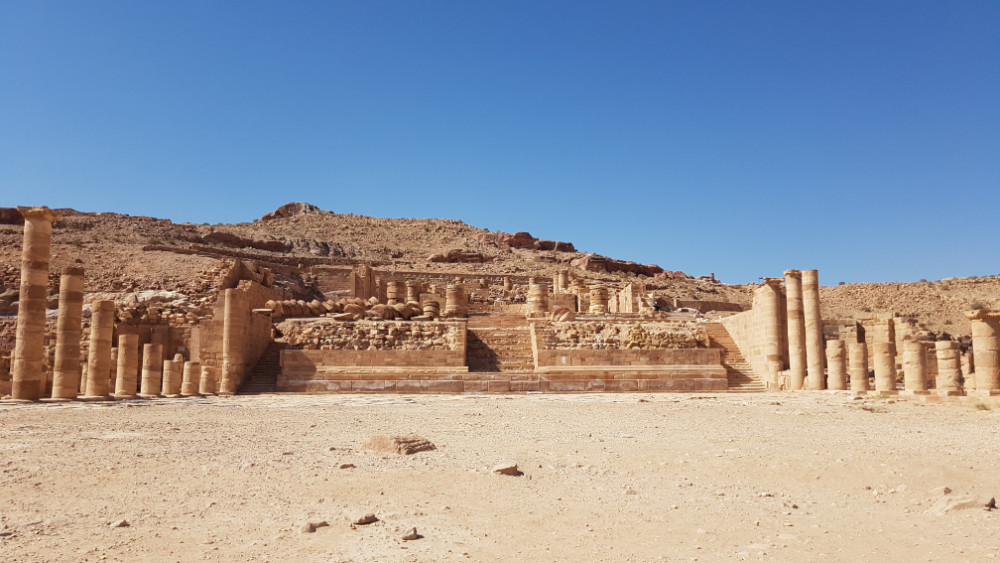
The Great Temple represents one of the major archaeological and architectural monuments of central Petra. It is estimated to cover an area of 7,000sqm.
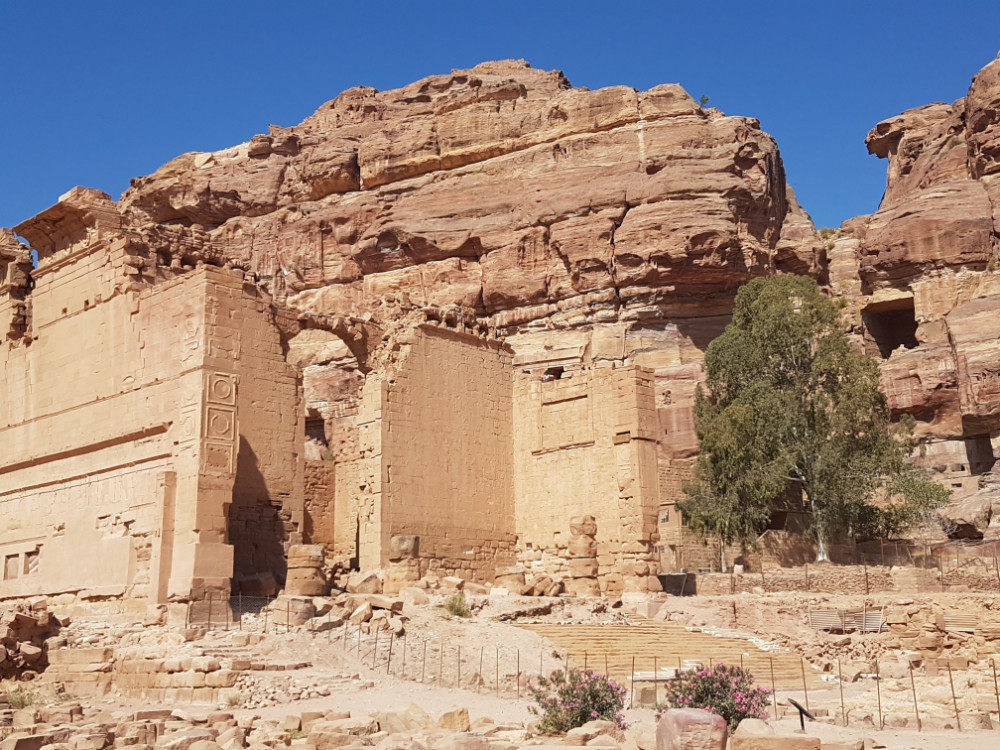
Qasr al-Bint is almost square and is set on a podium. It was the main and most important temple of Petra, dedicated to Dushara, a deity in ancient Middle East worshipped by Nabateans at Petra.
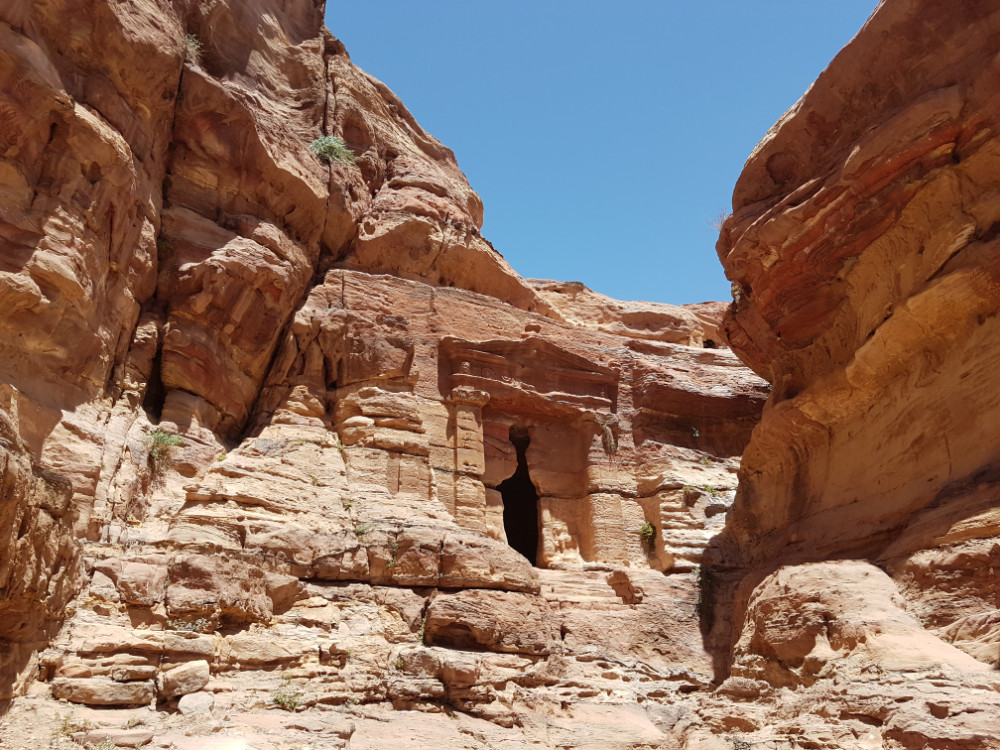
The Lion Triclinium can be seen on the way to the Monastery and is so-named because of two lions carved on both sides of the entrance.
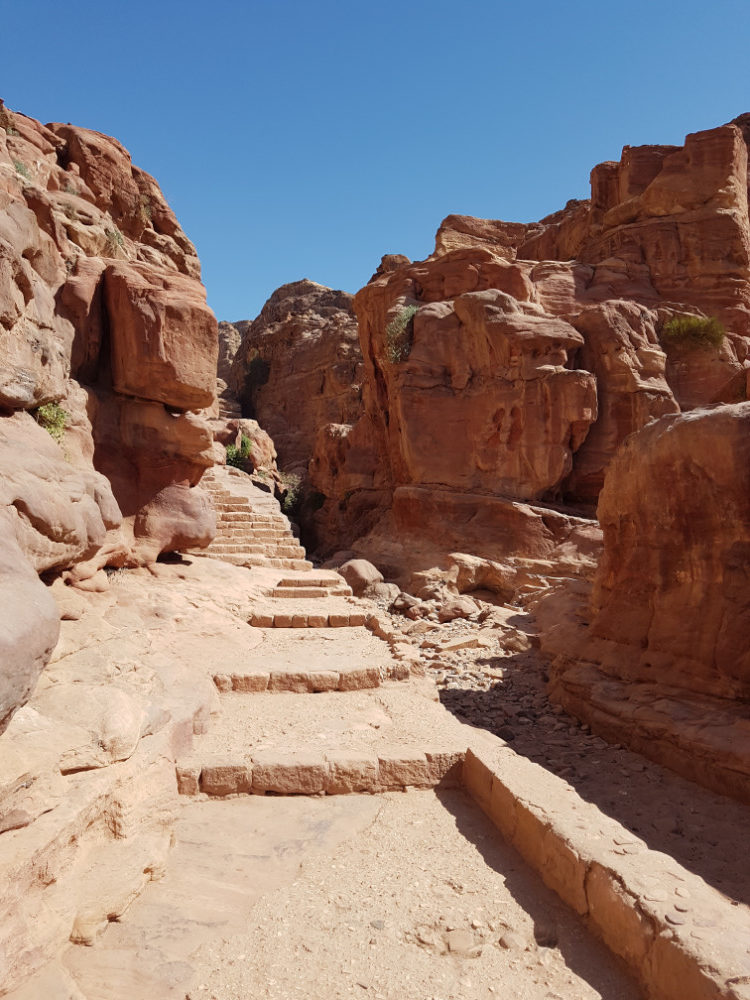
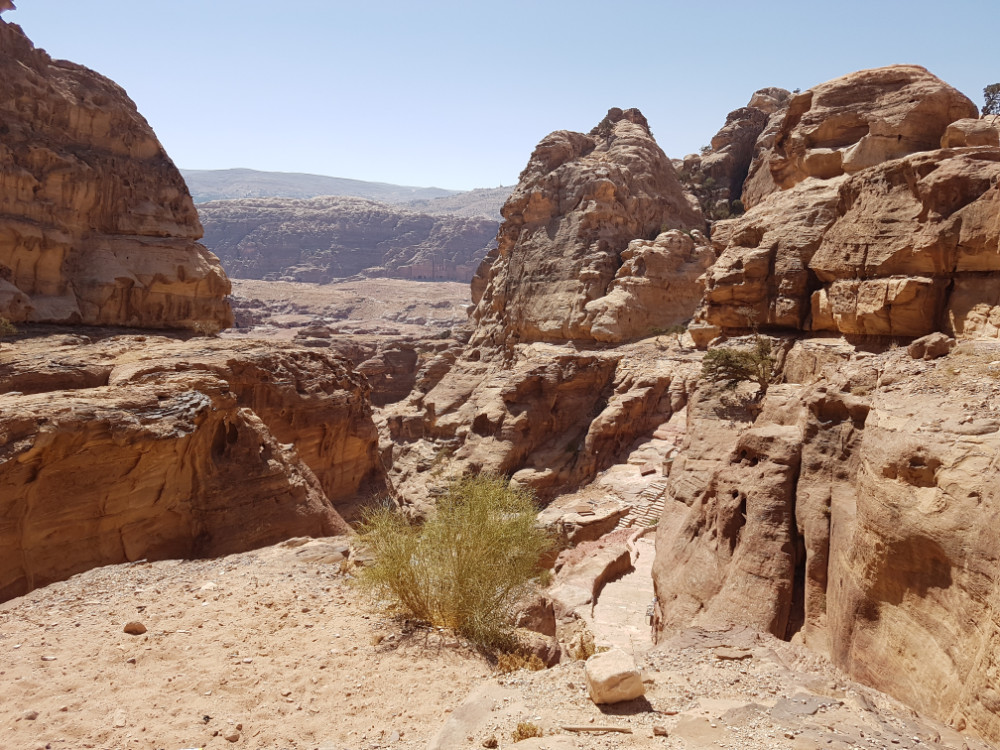
Some of the views you’ll see and paths you’ll trek on your way to The Monastery.
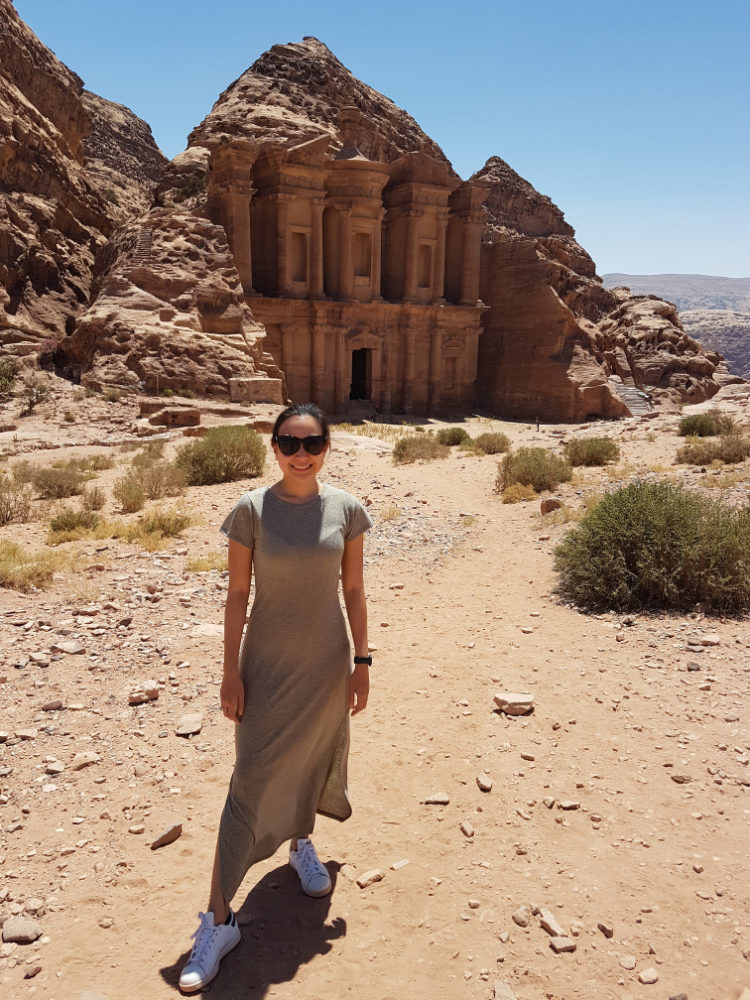
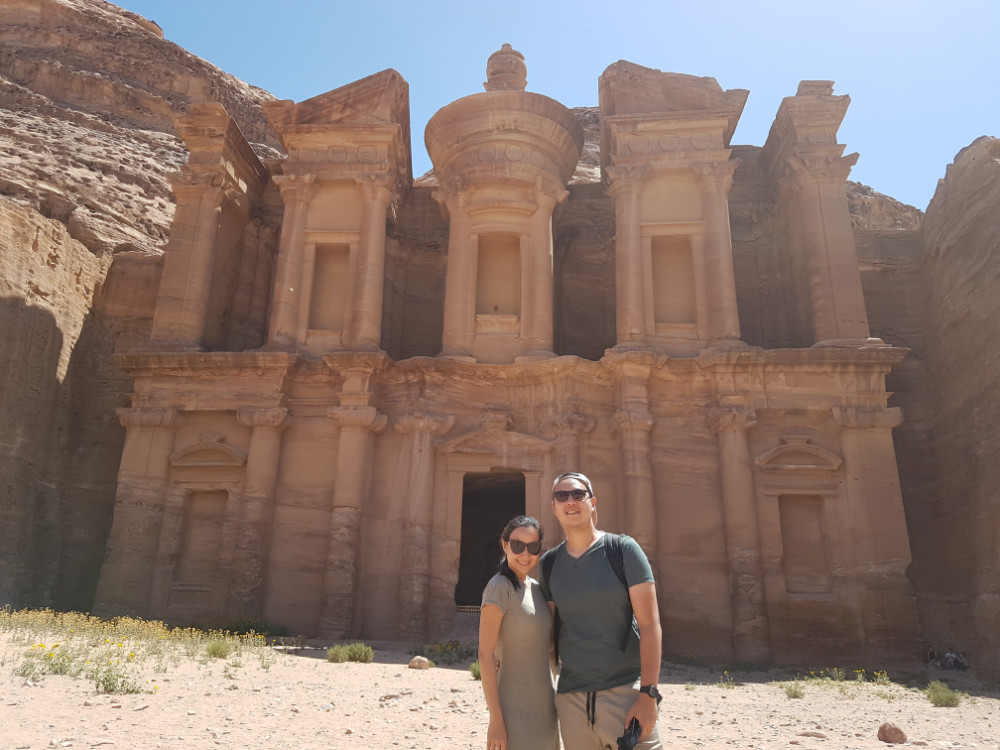
The Monastery or Ad Deir, is one of the largest monuments is Petra measuring 47m wide by 48.3m high. The interior is occupied by two side benches and an altar against the rear wall. This space was used as a biclinium for the meetings of religious associations.
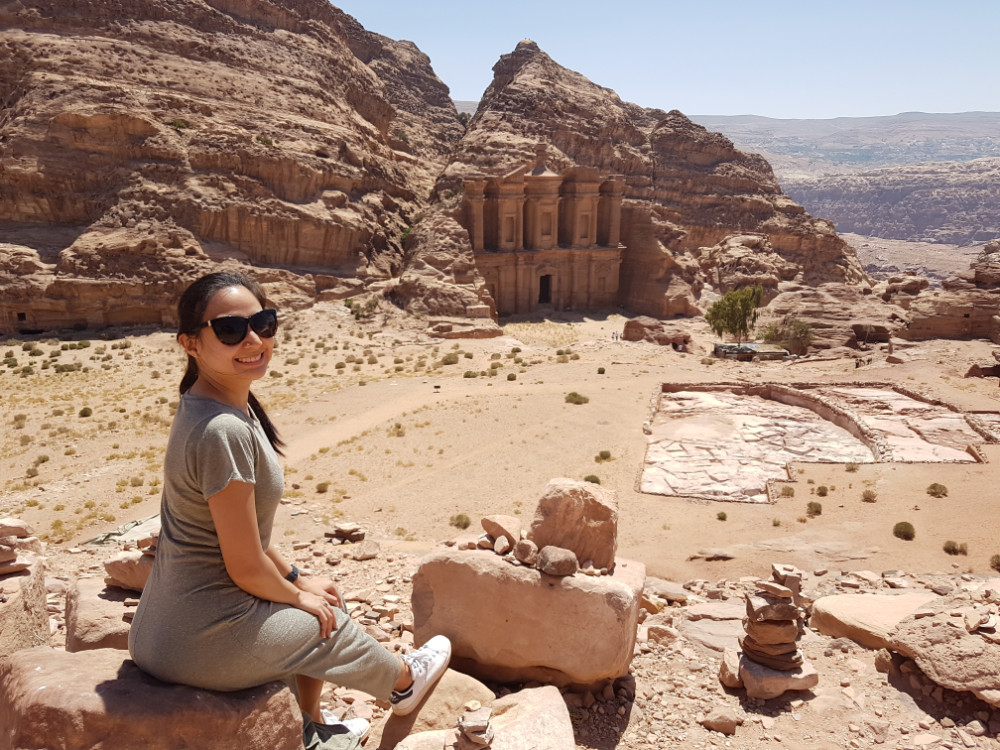
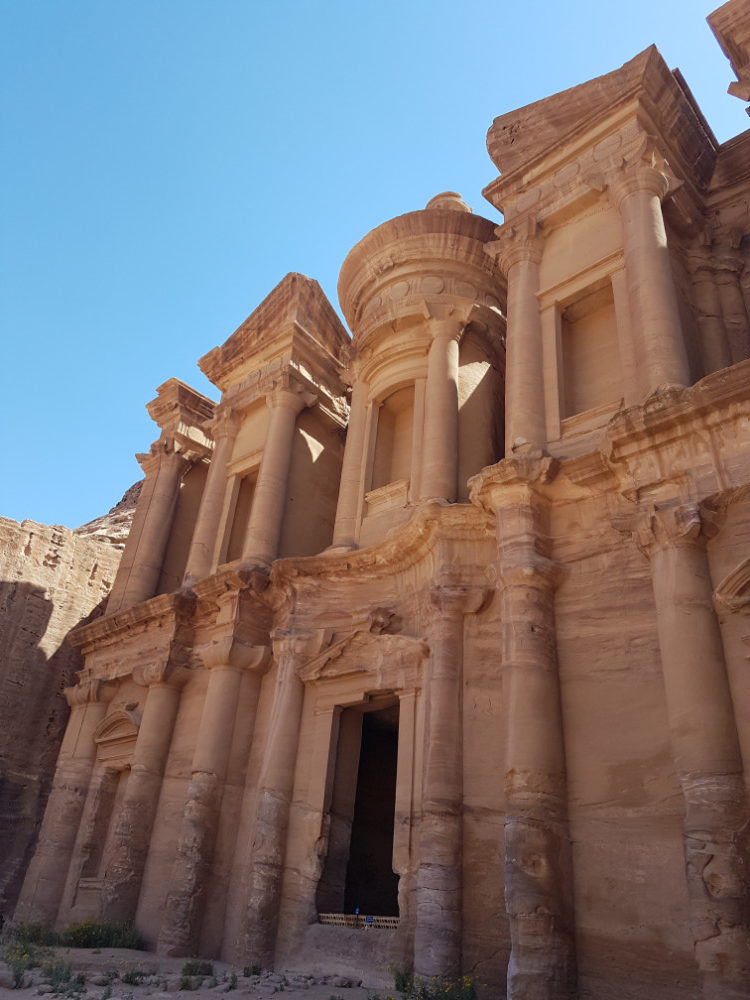
This is the view you get if you climb a bit further.
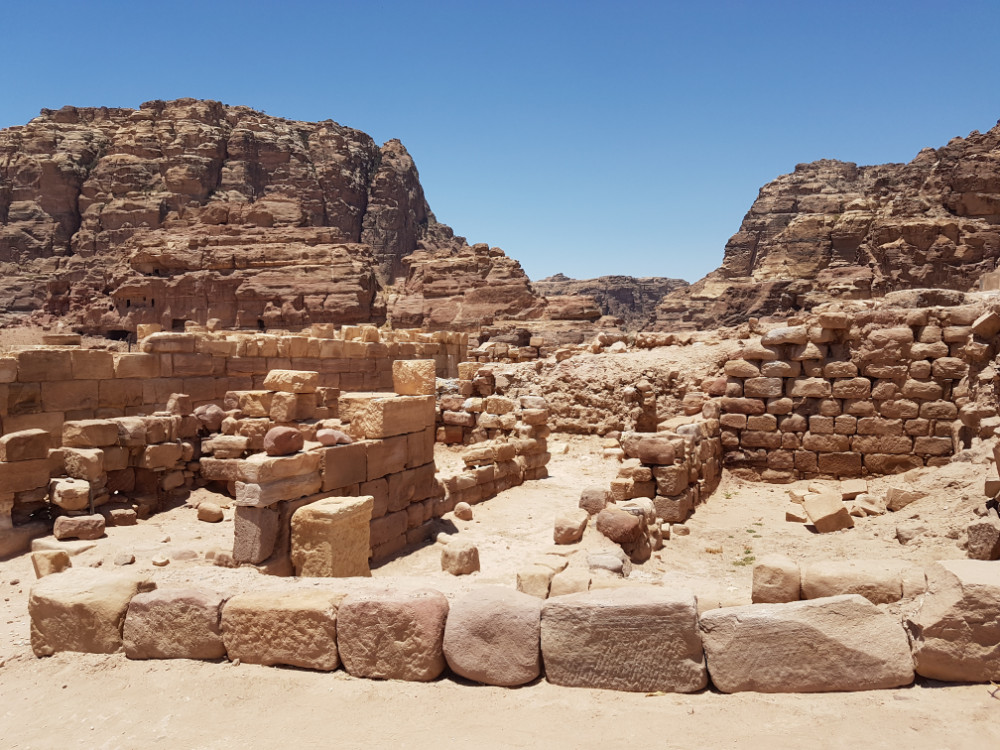
A diorite statuette of Osiris (god of the afterlife, the underworld, the dead), dated to the 6th century BC, was discovered at The Temple of the Winged-Lions and was probably stored as a sacred relic. Other figurines and a statuette representing mourning Isis (known as protector of the dead and goddess of children) suggest that the temple was dedicated to Isis and Osiris, identified with Dushara and Aphrodite.
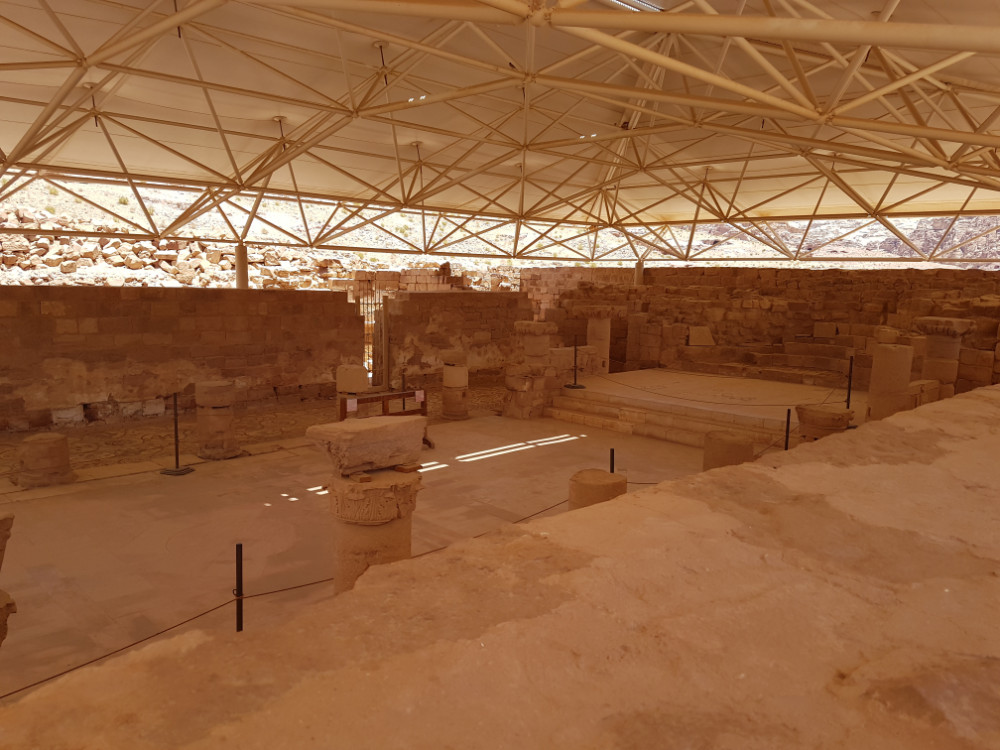
The Church was probably built around the end of the 5th century AD and destroyed by a fire and earthquake in the following century. Much of the building materials were reused from earlier monuments in Petra.
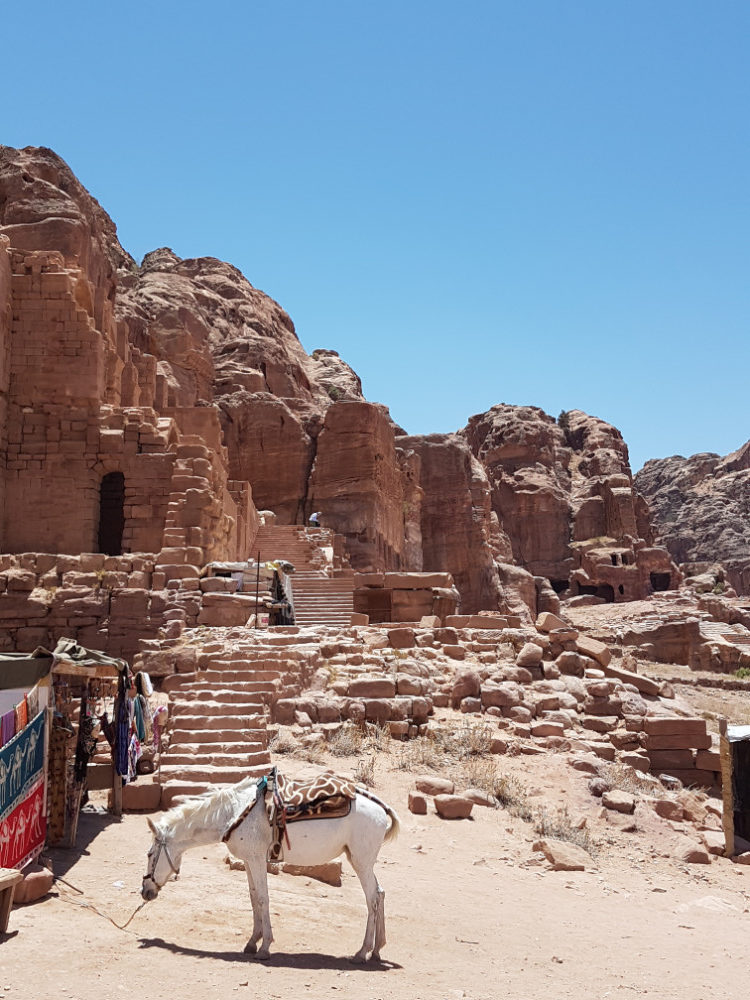
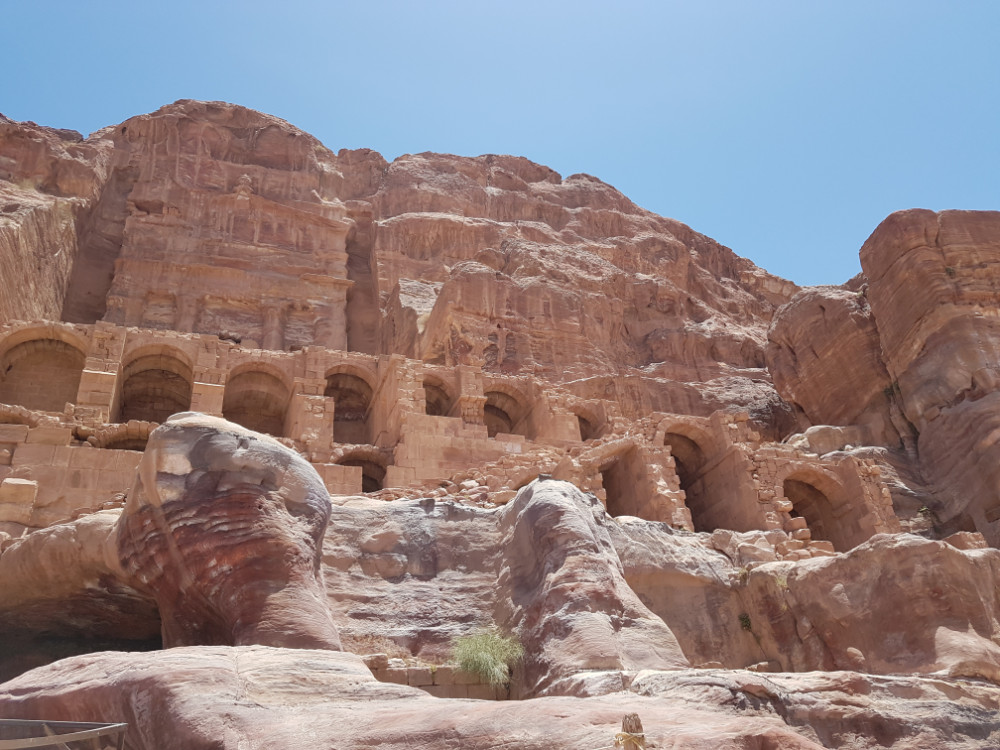
The Royal Tombs was the name given to the four magnificent facades adjacent to each other on the right side of the main path through the middle of the city. The four structures are the Urn Tomb, the Silk Tomb, the Corinthian Tomb, and the Palace Tomb.
If that wasn’t enough historical facts, visit this link for more information. 🙂 It was quite a tiring day. Our skin was burnt and we were starving when we finished, but visiting one of the most beautiful ancient cities in the world was definitely worth it. We had so many moments when we were fully captivated like when the Siq opened up dramatically onto The Treasury or when after the long trek, The Monastery surprised us on the right and all we could do was breathe a sigh of relief and stare at it in awe. Petra has been preserved so well that it’s so easy to imagine how people used to live here, how colorful and lively it must’ve been. We genuinely hope you enjoy your trip too!
You can check out other things to do in Jordan from our post here.

